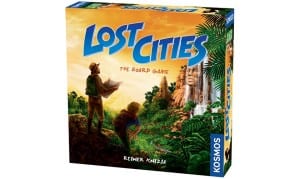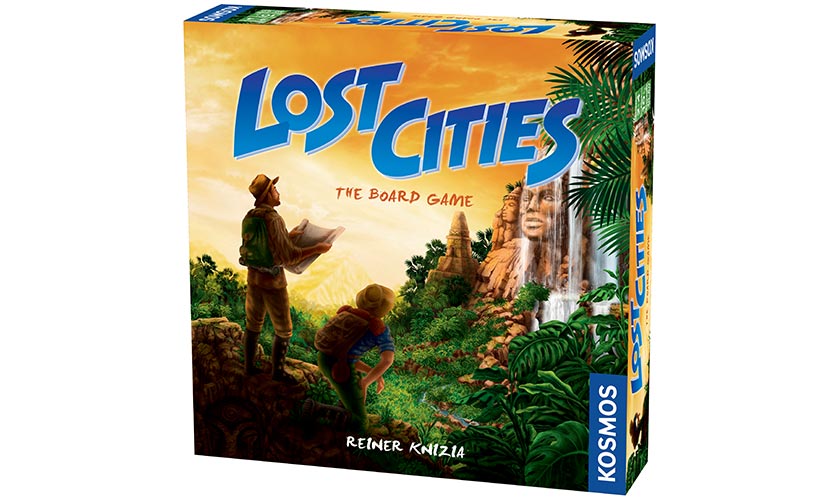 If you haven’t yet played Lost Cities: The Original Card Game, from Thames & Kosmos, you’re missing out on a terrific game that might seem like it relies on the luck of the draw, but actually requires a good deal of strategy. The same could be said of the company’s Lost Cities: The Board Game, which takes its predecessor’s play mechanics and upgrades them with a board, colorful game pieces, and the potential for up to four players to take part this time.
If you haven’t yet played Lost Cities: The Original Card Game, from Thames & Kosmos, you’re missing out on a terrific game that might seem like it relies on the luck of the draw, but actually requires a good deal of strategy. The same could be said of the company’s Lost Cities: The Board Game, which takes its predecessor’s play mechanics and upgrades them with a board, colorful game pieces, and the potential for up to four players to take part this time.
In Lost Cities: The Board Game, there are five color-coded paths, each leading to possible fortune or victory. Each player, in turn, has a team of five explorers, and can place one of them on each path (though they are free to explore as few or as many of the paths as they want). Each additional step along the path yields either more points or a smaller penalty, but to move the explorers along, players must first put down a card from their hand. They can also opt to neither place nor move any of their pieces, but to put the card down on the board instead (All cards of the same color are stacked next to their corresponding path).
As was the case in the original Lost Cities, the cards are numbered from zero to 10, and must be played counting up. Because of this, the only practical strategy is to play the lowest-numbered cards first. That may sound obvious; however, it’s not uncommon to start out with a handful of 7’s, 8’s, and 10’s. Then what do you do? Do you surrender a few of those high-numbered cards for the opportunity to deal through the deck, and if yes, which ones? After all, your opponent can pounce on any card placed on the board during their turn.
But for all the need to strategize, the game also has its share of random elements that keep things from being too predictable. There are, for example, randomly selected icons placed beside the paths, and these either give the player bonus points, or lets them move any of their pieces one extra space. In addition, each player has a piece called the researcher, and any points they amass are worth double at round’s end. While the researcher can help spill an otherwise close game wide open, players should have a care, since any penalties they amass by not traveling far enough down their chosen path are also doubled.
Lost Cities: The Board Game has thinking elements that make it more appropriate for kids who are slightly older, but anybody looking for a good strategy game should check it out. It’s also highly recommended for fans of Lost Cities: The Original Card Game, and a testament to how strong the underlying play mechanics of the series are, given that introducing something as simple as a board can make it seem fresh all over again.

